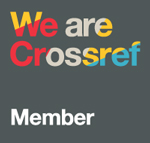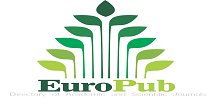Playful strategies for the development of fine motor skills in children from an initial educational institution
DOI:
https://doi.org/10.51440/unsch.revistaeducacion.2021.19.198Keywords:
Playful strategies, fine motor skills, bimanual coordination, visual-manual coordination.Abstract
The research work that is presented was developed with the objective of verifying the influence of playful strategies on the development of fine motor skills in children from an initial educational institution. It is an investigation carried out from the quantitative approach, of an experimental type and specified in a pre-experimental design. Likewise, for data collection, the observation sheet was used as an instrument, which was applied to a sample of 20 children of 5 years of age of the initial education level. The statistician used for the corresponding hypothesis test was Wilcoxon as it is ordinal scale data. The results obtained as a result of the research carried out allow us to conclude that playful strategies significantly influence the development of fine motor skills in 5-year-old children of the initial education level, a result that is corroborated with the level of significance that is equal to 0.000 <0.05 so it is allowed to reject the null hypothesis and accept the alternative hypothesis.
Downloads
References
Bermejo R. y Bláz T, (2016). El juego infantil. EDITORIAL SÍNTESIS, S. A. Vallehermoso, Madrid https://www.amazon.com/-/es/Ra%C3%BAl-Bermejo-Cabezas/dp/8490773343
Cabrera, B.C., Dupeyrón, M.N. (2019). El desarrollo de la motricidad en los niños y niñas del grado preescolar” p. 222-239 Disponible en: http://mendive.upr.edu.cu/index.php/MendiveUPR/article/view/1499
Caneo, M. (1987). El juego y la enseñanza de la Matemáticas. Tesis para obtener un título de profesor. Universidad Católica de Temuco.
Córdoba, E.F., Lara, F. & García, A. (2017). El juego como estrategia lúdica para la educación inclusiva del buen vivir. ENSAYOS, Revista de la Facultad de Educación de Albacete, 32(1). Enlace web: http://www.revista.uclm.es/index.php/ensayos
Delgado, I. (2011). El juego infantil y su metodología. Paraninfo S.A. https://www.sintesis.com/data/indices/9788490773345.pdf
Diaz, A. et al. (1993). Desarrollo Curricular para la Formación de Maestros Especialistas en Educación Física. España: Editorial Gymnos.
Flores, H. (2009). Estrategia alternativa para mejorar la adquisición dela lecto-escritura. http://www.utan.edu.mx/~huasteca/documentos/biblioteca/thfs.pdf
Frías, C. (2014). 100 situaciones didácticas de psicomotricidad. México: Trillas
García A y Llull J. (2009). El juego infantil y su metodología. Peñalba.
Gesell , A. (1975). Niño de 1 a 5 años : guía para el estudio del niño preescolar. Buenos Aires : Paidós
González. Z. (2007). Los programas de estimulación temprana desde la perspectiva del maestro. Liberabit, 13(13).http://www.scielo.org.pe/scielo.php?script=sci_arttext&pid=S1729-48272007000100003&lng=es&tlng=es
Guaman , S. (2015). Estimulación infantil en el desarrollo motriz de los niños/as de 3 a 4 años de edad del centro infantil del buen vivir ". Universidad Central del Ecuador: Quito .
Landi, S. P. (2017) Estrategias metodológicas lúdicas para mejorar la motricidad fina en niños y niñas de 3 a 4 años del Centro Educativo Inicial Antonio Borrero Vega en el nivel inicial 1B año lectivo 2016 – 2017. https://dspace.ups.edu.ec/bitstream/123456789/14583/1/UPS-CT007164.pdf
Mallart, J. (2000). Didáctica: del currículum a las estrategias de aprendizaje.
Meneses, M y Monge, M, (2001). El juego en los niños: enfoque teórico Educación. Universidad de Costa Rica San Pedro, Montes de Oca, Costa Rica
Macías, A. M., García, I., Bernal, R. E., & Zapata, H. E. (2020). La estimulación y el desarrollo motor fino en niños de 5 años. Revista Conrado, 16(74), 306-311.
Palacios , J. (2013). Desarrollo de la motricidad fina a través de técnicas grafo-plásticas Universidad del Azuay -Facultad de Filosofía, Letras y Ciencias de la Educación -Escuela de Educación Especial: Cuenca.
Palacios, J. M (1979). El deporte en el niño y el adolescente. Cumbre Mundial sobre la Educación Física, Berlín, Alemania.
Parvularia, U. C. (2015). Los instrumentos lúdicos para el desarrollo de motricidad fina. fina en niños y niñas de 4 a 5 años. http://instrumentosludicosm.wixsite.com/instrumentosludicos/single-post/2015/03/13/Los-instrumentos-l%c3%9adicos-para-el-desarrollo-de-motricidad-fina
Pauta y Castillo. (2011). Guía de estrategias metodológicas a docentes para el desarrollo de la motricidad fina en niños de 4 a 5 años.Revista Española de Pedagogía.
Quispe, R.A(2012). Metodología de la investigación pedagógica. UNSCH. Ayacucho
Simón-Benzant, Y. (2015). La estimulación temprana a la motricidad fina, una herramienta esencial para la atención a niños con factores de riesgo de retraso mental. EduSol, 15 (51), 100-106. [Fecha de Consulta 20 de Mayo de 2021]. ISSN:. Disponible en: https://www.redalyc.org/articulo.oa?id=475747192008
Downloads
Published
How to Cite
Issue
Section
License
Copyright (c) 2021 Freddy Quispe Morales

This work is licensed under a Creative Commons Attribution-NonCommercial 4.0 International License.





















